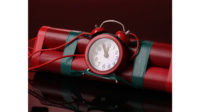Our industry is on a fastrack path of unprecedented change, which for some will result in complete chaos. Government regulatory changes are coming, unprecedented limitations on repairs and replacements are on the verge of enforcement, price hikes and inflation are at an all-time high, and the obstacles to operating profitably keep stacking for contractors. With the obsolescence of the old business model and old mentalities, old processes are coming to an end.
Change has been coming for decades. In the ‘90s, studies indicated that HVAC equipment was a significant contributor to climate change, leading to an international movement and 196 signed the Paris Agreement in 2015, setting out a global framework to avoid dangerous climate change by limiting global warming to well below 2°C and pursuing efforts to limit it to 1.5°C. At that time, the U.S. pledged to reduce carbon emissions by 25% over the following decade; however, we pulled out of the Agreement in 2017 and the Department of Energy (DOE) stepped into our industry.
The DOE evaluates appliances every six years to determine whether minimum efficiency requirements and testing standards warrant a change.
The DOE identified that the inefficiencies in commercial and residential units were a prime contributor to our climate crisis — some studies predict that by 2050, roughly 25% of global warming will be caused by HVAC. In response, a multiphase standards policy was developed to require the production of higher-efficiency cooling units. Change was slow, and at times regressive, but the deadline is fast approaching.
In 2018, the first set of efficiency regulations went into effect. Phase one of the revised standards focused on energy-efficiency increases in all air conditioning units by about 15%. Phase two, coming in January of 2023, will push the minimum efficiencies for central air conditioners and heat pumps up to 30% (an additional 15%), and testing procedures will change as well.
In regard to residential air conditioning and heat pumps, the DOE separated the country into three regions: North, South, and Southwest, with new standards in each region. While it varies by region, all regions will increase by the equivalent of one SEER in 2023, which will result in a lower amount of electricity used for the same amount of cooling.
Sell-through (the percentage of a product that is sold by a retailer after being shipped by its supplier) of existing systems will be allowed in the North if the product was manufactured prior to January 1, 2023. However, this is not the case in the South and Southwest; systems must comply with the 2023 federal minimums to be installed after January 1, 2023:
-
North Region Regulations
All HVAC systems installed in the north region are determined SEER2-compliant based on each system’s manufactured date. For contractors in the north region, compliance is determined by each system’s manufacturing date. This allows ample time to sell 13.0 SEER inventory. -
South Region Regulations
All HVAC systems purchased in the south/southeast region that do not meet the SEER2 requirements cannot be installed after January 1, 2023. -
Southwest Region Regulation
All HVAC systems purchased in the southwest region that do not meet the SEER2 requirements cannot be installed after January 1, 2023.
It is important to note that the 2023 requirements only apply to new systems, and existing systems will not need to be replaced if they are already installed and still functioning. However, you will no longer be able to replace just a heating or cooling system, if there is a failure of either appliance, the entire unit will require replacement.
As with previous standards, penalties will be implemented for noncompliance with the 2023 efficiency standards. For contractors, this includes potential loss of licensing, out-of-pocket equipment replacement, and heavy fines for those caught selling or installing noncompliant equipment.
The DOE has now encouraged whistleblowers. Now your competitors can turn you in for using outdated equipment, and not only do they get a financial reward, but you will be fined and forced to replace the entire system with a high-efficiency system, at your own expense.
Even more, disgruntled customers can now turn you in, meaning the consumer experience is more important than ever.
As a contractor, it is important to prepare for these changes by making sure you are aware of the different federal minimum efficiency levels and compliance requirements across regions.
Manufacturers have had to make a tough choice in the last few years: be champions of change or switch production only when they are forced to. Many manufacturers have chosen to be pioneers, forging ahead with new technologies and more efficient units, but these changes haven’t found their way into homes across the country. There are currently 260,000 service technicians in the United States and that means 260,000 different opinions regarding repair and replacement. In the past, this widespread variance of technician opinions has resulted in 81% of replacement sales being of the lowest efficiency. This cannot continue.
As 2023 approaches, you can prepare your team for the new efficiency requirements by learning the standards and metrics for your region and new technology specifics. This is the first step.
The second and most important step is effectively communicating these requirements to your team, teaching them how to effectively communicate new energy-efficiency requirements to your consumers — and making sure that each repair and replacement is streamlined and consistent to ensure compliance. In-field technicians and comfort advisors must be trained on these new standards and reoriented to focus only on higher efficiency equipment. You must ensure that each customer experience is a consistent, high-quality interaction that ensures the greatest customer satisfaction, effectively demonstrating the need for the highest efficiency equipment to counteract the disadvantages of excessive energy consumption with data-driven rationale that appeals to the customer.
What's your strategy for taking on the new challenges, the new shifting regulations, and the new shifting trends?
If you’re interested in a more in-depth look into these changes and the widespread industry impacts, join us for our free ongoing DOE webinar series.








